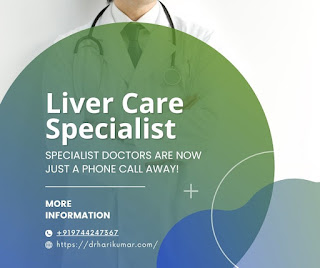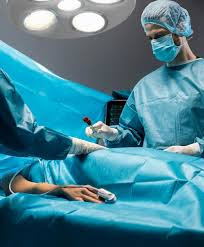Everything You Should Know About Endoscopy Procedures
Endoscopy has revolutionized the field of modern medicine, offering a less invasive way to diagnose and treat numerous health conditions. For anyone experiencing gastrointestinal issues, consulting a gastroenterologist is often the first step toward getting an endoscopy done. This procedure has become indispensable in diagnosing and managing conditions that would otherwise require more invasive methods.
Importance of Endoscopy in Modern Medicine
Endoscopy is not just a diagnostic tool; it's a lifesaver. It allows for the early detection of serious conditions like cancer, ulcers, and inflammatory bowel diseases. Gastroenterologists use endoscopy to examine the digestive tract, ensuring they get a close-up view of the problem areas without major surgical intervention. This means faster diagnoses and treatments that can save lives.
Types of Endoscopy Procedures
Upper Endoscopy (EGD)
This procedure examines the esophagus, stomach, and the upper part of the small intestine. It’s commonly used to identify the cause of stomach pain, difficulty swallowing, or unexplained nausea.
Colonoscopy
A colonoscopy is vital for detecting colon cancer and other lower gastrointestinal issues. It involves inserting a flexible tube with a camera into the rectum to inspect the colon.
Capsule Endoscopy
In this innovative technique, patients swallow a small capsule with a camera inside, which captures images of the digestive tract as it moves through.
Endoscopic Ultrasound (EUS)
EUS combines endoscopy with ultrasound to get detailed images of the digestive tract and surrounding organs, such as the pancreas and liver.
How Endoscopy Works
Endoscopy uses a thin, flexible tube with a light and camera at its tip. This tool, called an endoscope, allows doctors to view real-time images of the internal organs. The procedure varies slightly depending on the type of endoscopy but generally follows a straightforward process:
Preparation (sedation or anesthesia)
Insertion of the endoscope
Examination and imaging
Biopsy or minor procedures if needed
Common Reasons for an Endoscopy
Endoscopy is recommended for a variety of reasons:
Diagnosing Stomach Pain: Persistent stomach pain can indicate ulcers, gastritis, or other conditions detectable through endoscopy.
Detecting Inflammatory Bowel Disease (IBD): Conditions like Crohn's disease or ulcerative colitis are diagnosed effectively using endoscopic tools.
Screening for Cancer: Regular endoscopies are crucial for early cancer detection, especially in high-risk individuals.
Preparing for an Endoscopy
Preparation is key to ensuring a successful procedure. Your doctor may ask you to:
Avoid eating or drinking for several hours before the test.
Stop or adjust certain medications.
Follow specific dietary guidelines leading up to the procedure.
What to Expect During the Procedure
Endoscopy is designed to be as comfortable as possible. Here’s what you can expect:
Sedation and Comfort Measures: Most patients receive sedation to minimize discomfort.
Duration and Monitoring: Procedures typically last 20-40 minutes, and vital signs are monitored throughout.
Benefits of Endoscopy Procedures
Endoscopy offers numerous benefits, including:
Minimally Invasive Diagnosis: No large incisions or lengthy recoveries.
Accurate and Detailed Results: High-quality images allow for precise diagnoses.
Risks and Side Effects
While generally safe, endoscopy does have some risks:
Common Side Effects: Sore throat, bloating, or mild cramping.
Rare Complications: Perforation or excessive bleeding, though extremely rare, may occur.
Recovery After Endoscopy
Most patients recover quickly after an endoscopy. It’s important to:
Rest for the remainder of the day.
Avoid driving or operating heavy machinery if sedated.
Watch for signs of complications, such as severe pain or bleeding, and consult your doctor if they occur.
Endoscopy vs. Other Diagnostic Tools
Endoscopy stands out among diagnostic methods due to its ability to provide real-time visuals and collect tissue samples simultaneously. Unlike imaging tests, it’s both diagnostic and therapeutic.
Advancements in Endoscopic Technology
Modern advancements have made endoscopy even more effective:
High-Resolution Imaging: Enhances the clarity of visuals.
Robotic-Assisted Endoscopy: Improves precision and accessibility to difficult areas.
Cost and Accessibility
Endoscopy is widely available and covered by most insurance plans. Costs vary depending on the type and location, but insurance often reduces the financial burden.
Frequently Asked Questions About Endoscopy
How Painful is an Endoscopy?
Most patients report little to no pain due to sedation, experiencing only mild discomfort.
Is Endoscopy Safe for Children?
Yes, endoscopy is safe for children when performed by trained specialists.
How Often Should One Undergo Endoscopy?
Frequency depends on your health condition and doctor’s recommendation. For cancer screening, every 5-10 years may suffice.
Can Endoscopy Detect Cancer Early?
Absolutely, endoscopy is one of the most effective tools for early cancer detection.
Are There Alternatives to Endoscopy?
While imaging tests are alternatives, they don’t provide the same detailed insights or allow for biopsies.
Conclusion
Endoscopy is an invaluable tool in modern medicine, offering a minimally invasive way to diagnose and treat various conditions. If you’re experiencing persistent gastrointestinal symptoms, don’t hesitate to consult a gastroenterologist. They can guide you through the process and ensure you receive the care you need.




Comments
Post a Comment